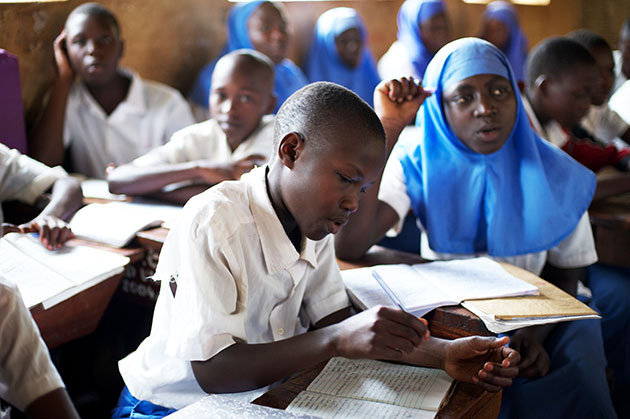The Education for All movement and the adoption of free primary education in many countries will put significant pressure on secondary education systems in developing countries to serve more students and to do so more effectively. As today’s primary school students become old enough for secondary school, and as countries strive to meet the targets set forth under the United Nation’s Sustainable Development Goals, enrollment in secondary education is likely to increase rapidly. For now, though, despite remarkable progress in boosting enrollment at the primary level, secondary enrollment rates remain stubbornly low in South Asia and sub-Saharan Africa.
To address these and other challenges, a group of private donors came together in 2012 to form the Partnership to Strengthen Innovation and Practice in Secondary Education (PSIPSE). Since its inception, the PSIPSE has invested more than $52 million dollars in 59 projects to conduct research on secondary education and pilot, adapt, and scale promising secondary education interventions.
As part of this effort, Mathematica Policy Research released two new reports this week looking at what can be done to help secondary schools increase participation, improve learning, and make secondary education in developing countries more relevant so that it positions students for success later in life.
A survey of the PSIPSE’s grant-funded activity showed that grantees provided direct instruction or support to 115,515 youth and trained 10,882 teachers in 2016. In a comprehensive review of the existing literature, we also found important themes around what’s working and where there are significant gaps in the evidence.
Increasing participation: Making sure youth become students and stay in school
- Money is not a silver bullet—across different contexts, fee reductions, scholarships, and cash transfers have enabled some students to enroll or continue in secondary school, but other barriers continue to prevent many students from graduating. Moreover, these approaches seem to be effective at increasing participation but not necessarily improving learning.
- Having positive role models is important. In Bengal, a quota that required one-third of councilors to be women had the side effect of completely erasing the adolescent gender gap in school enrollment, reading, and writing.
- Providing female students with bicycles to make it easier to get to school boosted female enrollment in India. It reduced the gender gap by 40 percent and also improved girls’ scores on a state exam. Such innovative approaches to improving access by reducing transportation time or costs could be a cost-effective alternative to building more secondary schools.
Improving learning: Making sure that when youth are in school, they actually learn
- Aside from a handful of small studies showing that more engaging teaching methods can improve learning in the short term, there is very little research on teaching methods, curricula, teacher characteristics, or school conditions and their impact on students’ participation and performance.
- Even without other improvements to the school system or to quality of instruction, motivating teachers and students to work harder in school can lead to better learning outcomes.
- Youth with stronger social networks and more supportive cultural norms are likely to have better educational outcomes.
Enhancing relevance: Making sure that what they learn in school will prepare students for adulthood
- Changing students’ and parents’ perceptions of the value of education is another approach to addressing relevance barriers and appears to be a promising strategy for boosting participation.
- There aren’t enough rigorous evaluations of innovative approaches to better equip students for the labor market or civic participation.
As the PSIPSE’s learning partner, Mathematica is working hard to ensure the efforts supported are guided by the evidence—not just the theory. Hitting the Sustainable Development Goal targets requires researchers, grantees, funders, and policymakers to demonstrate the value of evidence—whether it is encouraging or disappointing—and to work together to address these global challenges.



